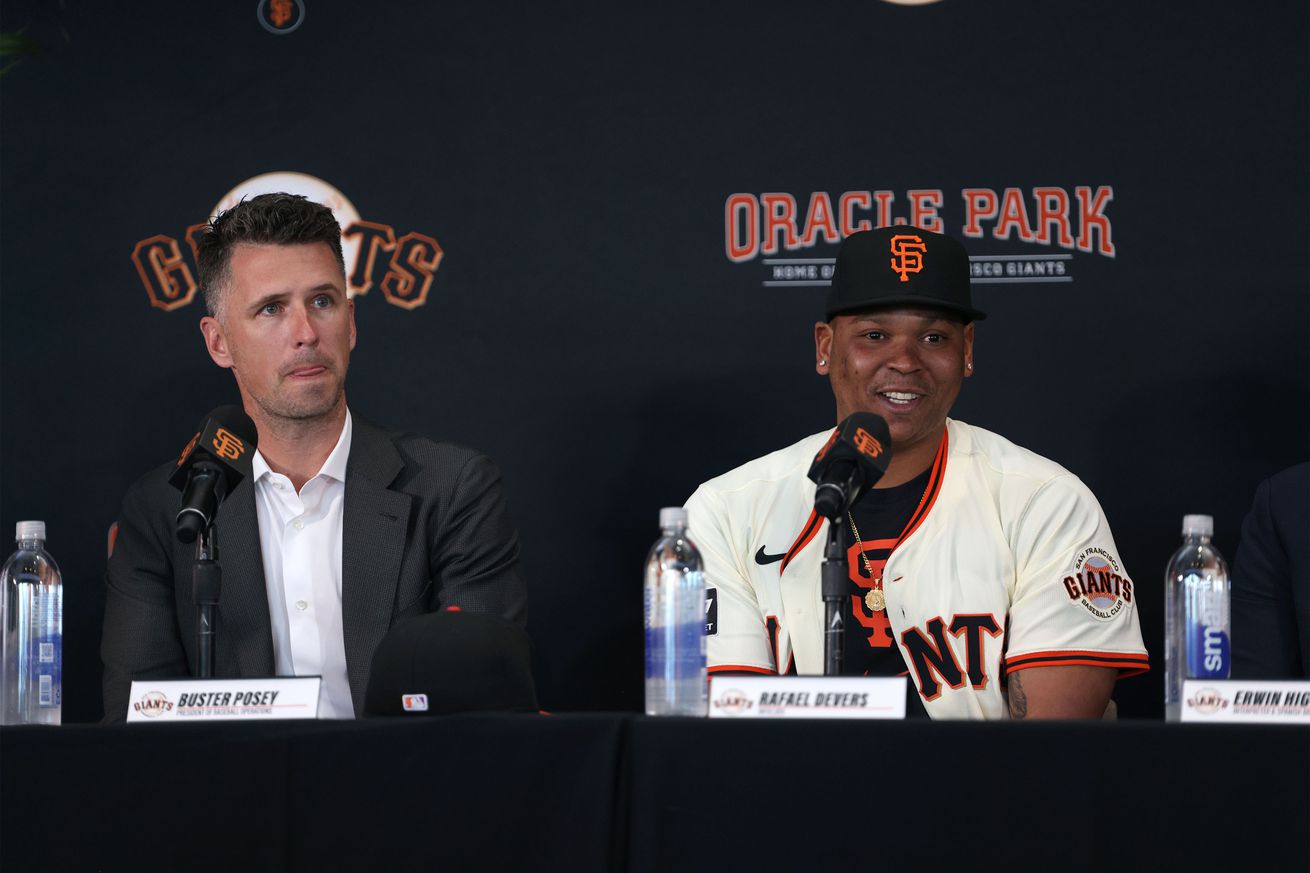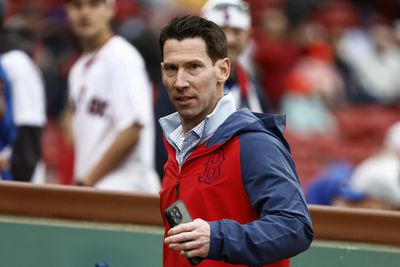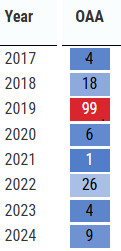
Buster Posey recognized that superstar players are not being valued properly by some teams, and struck at the perfect time.
“The Rafael Devers-to-San Francisco blockbuster has executives across baseball confounded. On one hand, the Red Sox got out from a deal every model in baseball has as underwater — and got talent back. On the other, a team with talent and momentum just traded its best hitter.” – Jeff Passan (Sunday, 8:55 pm ET).
While many New Englanders were wrapping up their Father’s Day celebrations, a shocking alert came in on Sunday evening that Rafael Devers was being traded to the San Francisco Giants. It occurred at the heels of a three-game sweep at home against the New York Yankees, with Devers homering in his final game for the team on Sunday.
I have tried to welcome the world of analytics and have seen a lot of it in action. I know that we can no longer look solely at batting average, ERA, and pitcher wins to tell the whole story on a player. And yet while unpacking all of the angles that contributed to this deal, and there are many, I couldn’t get past the wording of Passan’s tweet – “every model in baseball has this deal as underwater.” And in that moment, I came to the conclusion that when it comes to superstars, you can take your “model” and shove it.
A deal that seemed to be a fair market value extension for Devers just 2.5 years ago was now, seemingly, an untradeable contract? This doesn’t compute to my non-AI brain. For that to be the case, one would assume that the player has not lived up to expectations. For Devers, on the field, that couldn’t be further from the truth (setting aside the fact that both the team and the player have handled all communication with one another and with the media horribly from the start of this year).
Over the first two seasons since signing the extension, Devers averaged 30 home runs, 92 RBI, and 89 runs scored. He is on pace to surpass each of those numbers in 2025, while leading the entire American League in walks. His slash line from 2023-2025 is .272/.363/.504, with a strikeout rate that has stayed in line with his career. In 2025 alone, Devers’ OBP is .401 (6th in MLB) and his wRC+ is 149 (15th in MLB). On no planet could you argue that Devers’ on-field production has been a disappointment for any extended period of time, except the final five weeks of 2024 (.183 BA, 1 HR) when he was playing through a shoulder injury and saw a significant dip in bat speed.
“The Red Sox got out from a deal every model in baseball has as underwater.”
Devers was a bad teammate this year; there’s little doubt. His quotes came off poorly in spring training, he was warned by the people paying his checks in May about the continued negative headlines, he pissed off teammates (new, and old), and if Joon Lee’s report is true that he felt Kristian Campbell slighted him by offering to play first base, then that’s impossible to defend. My understanding is that they couldn’t leave first base empty when handing in the lineup card; someone had to play there. However, you put up with bad teammates if they do what they’re being paid to do at the dish. The team put up with Manny Ramirez for 7.5 years because he was an all-star in each of those seasons, and it took his assaulting the traveling secretary to finally push them to send him packing. If at the end of this season, the situation was still untenable and the team decided to move Devers to the highest bidder, it would be understandable but I might have picked a different time to trade your franchise player than at the end of a homestand where you won seven of eight games against your top two division rivals. Yes, this 2025 team can make the playoffs with the current crew and have more fun doing so, but their upside is capped.

Photo By Winslow Townson/Getty Images
Before the 2009 season, Fangraphs introduced the idea of how to “value a win.” Based on the amount of money spent across baseball in a given year, there are 1,000 wins that are up for grabs. You can read all the boring exciting details in here on how to calculate the value of a win, but in 2002, a win was “worth” $2.6 million. In 2008 the price was $4.5m. Entering the 2025 season, this Ken Rosenthal piece tells us that Fangraphs now estimates $8m per win, and yet many franchises put that value closer to $11-12m. Let’s split the difference and say that a win is worth $10 million, a number that makes math easy. Devers signed a 10-year extension before the 2023 season, although the 10-year/$313.5M extension started in 2024, meaning he’ll average $31.35M from 2024-2033. Here’s his output thus far:
Devers 2023: 3.4 fWAR * $10M/win = $34M worth (> $22.5M salary)
Devers 2024: 4.1 fWAR * $10M/win = $41M worth (> $31.35M salary)
Devers 2025: 2.1 fWAR (on pace for 4.7) * $10M/win = $47M worth (> $31.35M salary)
Keep in mind that Devers has not played a single inning in the field this season, so the offense has to do even more heavy lifting to surpass a 2-win player by mid-June. Even if we drop the value of a win down to $8M, Devers has outpaced his salary in every season since the day he signed his extension.
One could argue that Devers’ defensive value decreased in the meantime, but did it really? Unless the team thought that he would magically return to 2019 levels when he played better defense than Matt Chapman, his defense has always been poor. If they were expecting that, then I have even more questions about their model.

Statcast|Rafael Devers
I won’t do any more math for you, but Mookie Betts’ WAR since the start of the 2020 season has tallied up to 34.0, which has far surpassed his $30.4M/year annual salary, while splitting time equally between second base, shortstop, and right field. 34 WAR, a number that the team’s dumb ass model didn’t get right either.
Not only did the Red Sox get out from “underwater,” but they also “got talent back”! Just like they did in the Betts trade, right? So much talent that they had to attach David Price’s contract to the deal and pay half of his salary.
You cannot be this rigid in your approach to team building when evaluating potential Hall of Fame talent within a model. That’s how Tom Brady ends up leaving and winning a Super Bowl in Tampa Bay, while your team gets stuck in a six-year rebuild. Giants GM Buster Posey, who played for the team for his entire 12-year career, understood that when he took this perceived risk. A player who produces year-in and year-out deserves an uncomfortable contract from the team paying it, one that may not pay back every penny through the final year of the contract. However, the money that a team loses at the end of these super-deals is canceled out by the money they gained in the first 6-7 years, when the player was on their minimum salary and in arbitration. Additionally, merchandise, ticket sales, and TV ratings from a fanbase that isn’t perennially pissed off can help recoup some of those dollars as well.
Back in 2009, when that Win Value article was published, this paragraph stuck out the most.
So, the market of wins available for purchase doesn’t total 1,000. A significant batch of MLB players simply aren’t available for acquisition at any given time. The Cardinals aren’t trading Albert Pujols. The Mariners aren’t trading Felix Hernandez. The Rays aren’t trading Evan Longoria. The wins that these players generate are not for sale.
At that time, Pujols had just rifled off a succession of 7-8 fWAR seasons and was making a (wild!) $16.3 million, Longoria had just finished off a 5.6 fWAR rookie season, and while Hernandez hadn’t topped 3.6 fWAR yet, he was still on his rookie deal and was between 5-7 fWAR for the next six seasons. They wouldn’t replace a dollar with two fifty-cent pieces for these players. They were “not for sale” because they were productive, star players who were necessary to win championships. Just like champions Mookie Betts, Xander Bogaerts, and Jon Lester didn’t need to be for sale. Two of those players were key pieces of championship teams elsewhere after leaving Boston.
Of course, every situation is different. Rafael Devers ≠ Xander Bogaerts ≠ Mookie Betts ≠ Jon Lester. That group ran the gamut of scenarios: a disrespectful lowballing from ownership of a home-grown talent (Lester); a fear of getting nothing in return and then, essentially, getting nothing in return anyway for an impending free agent who was a homegrown talent (Betts); deciding a year in advance to replace a homegrown talent with a more washed up and injury-prone version of their homegrown talent (Bogaerts); or not communicating with your home-grown talent about your plans for him all offseason, leading to him behave like a petulant child (Devers). But forgive me if I don’t cut the Red Sox any slack here for screwing up yet another situation involving a player who signed in Boston as a teenager and became beloved by the fanbase.
It was so predictable that (former) Bostonian, Bill Simmons, called this exact scenario for Devers in December of 2022.
Can’t wait for the “Rafael Devers for 5 prospects” trade. That’s next. Let’s keep cutting those costs for 2024 so you can sell the Red Sox and redirect the $$$$ for the Vegas/NBA expansion team with LeBron, guys.
— Bill Simmons (@BillSimmons) December 8, 2022
Sure, he was implying that Devers would be dealt during the 2023 season, and not sign an extension, but what’s the difference? The CBO at the time, Chaim Bloom, and the ownership didn’t want to sign Devers to an extension, but were forced to do so because of past mistakes. Two-and-a-half years later, their model probably devalued hit-first DH-types as replaceable as ever, and they would use any excuse they could to cut the cord when the time came.
A piece posted on NBC Sports Bay Area on Tuesday night provided a behind the scenes of how the trade came together. It started with a group text from Posey to the rest of the Giants baseball operations group, “Do you guys think I should ask about Devers?” which the other two endorsed with a thumbs up. Posey later said to ownership, “Did you think we were going to come to you with a bat controlled for the next eight years?”
I bet Buster Posey would’ve called Rafael Devers at some point during the offseason to discuss their plans in the infield. I like the Giants’ “model” a lot more than the Red Sox’s these days, one that doesn’t have a glaring need for a standout power hitter near the top of their lineup.
If your model can’t find a spot for Rafael Devers, then maybe you need to work on a new model. An updated version of the Win Value article in the spring of 2025 should have said: “The Red Sox are not trading Rafael Devers. The wins that player generates are not for sale.” Craig Breslow better be right about this decision, and quickly, or he’s going to have the same fate as Chaim Bloom in no time.